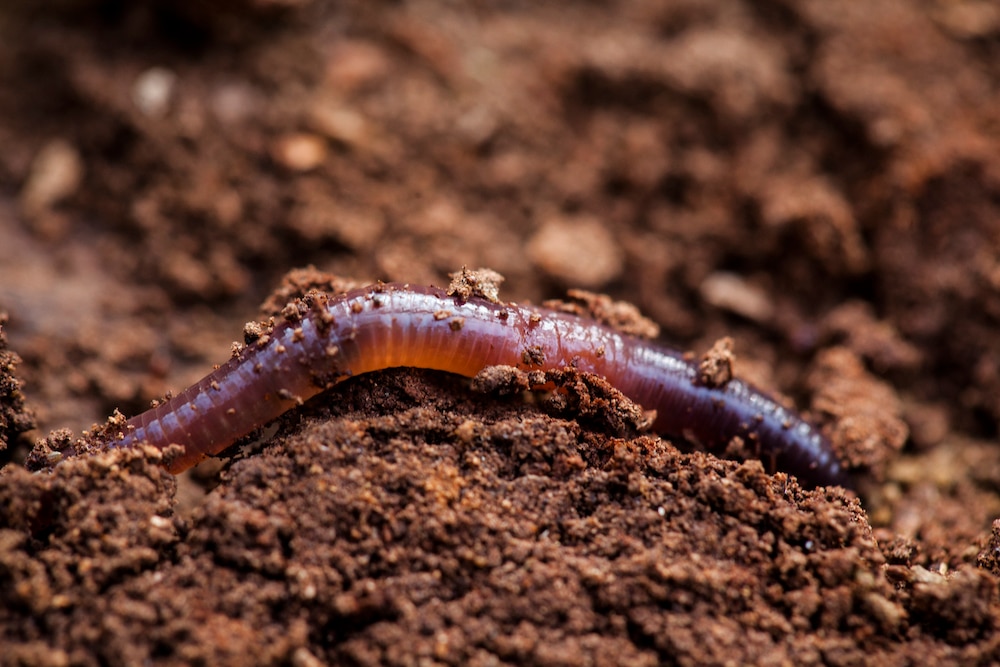Create a free profile to get unlimited access to exclusive videos, sweepstakes, and more!
Were worms pooping silver 500 million years ago?
Worm coprolites glittered with something strange that wasn't supposed to be there — silver.

Worms are peculiar creatures. They might grow to fantastic lengths, survive subzero glaciers, or eat your brain. But can they poop metal?
That was exactly what researcher Julien Kimmig was baffled about when he and colleague Bryan Pratt were digging through rock samples from the Ravens Throat River Lagerstätte in northwest Canada. They recently coauthored a study recently published in Canadian Journal of Earth Sciences.
Lagerstättes are layers of sediment that have fossilized and revealed some of the most exceptionally preserved specimens of prehistoric life ever, including those from the Haiyan Lagerstätte that Kimmig investigated earlier this year. This, however, is an anomaly. Coprolites (fossilized feces) in the rock samples glittered with something strange. The origin of these coprolites was unsure until Kimmig and Pratt carefully cracked the rocks open to discover Cambrian worms that had been frozen in time in burrows from what was once the ocean floor. And the shiny thing? Silver. Now that they knew the producers to the sparkly poop, they needed to find out how silver ever got in there. Worms aren’t exactly known for craving silver.
That the coprolites were this impeccably preserved after 500 million years is nearly unheard of in itself. Kimmig believes there were several environmental advantages for preserving poop.
“Burrows protected the feces from any currents that could have swept them away, or larger coprovores that would have eaten them. We also know that the oxygen in the burrow was cut off quickly, so the lack of oxygen reduced the risk of decomposition, and helped preserve the coprolites,” he told SYFY WIRE.
That still didn’t demystify where the silver came from. There was not enough in the surrounding rock to have created the largest pieces of silver in the coprolites, which were surprisingly devoid of the higher levels of lead and zinc that would be expected if they were really all that was left after a worm accidentally swallowed the silver. High levels of silver in water are also toxic and only survivable by a few life-forms. This is why Kimmig began digging elsewhere. He suspected that something else must have been involved here, and that something was even weirder.
It soon became apparent that the silver must have come from a colony of microbes that thrived on the feces after they were dropped and the worms wriggled back into their burrows. Some bacteria can extract silver from their surroundings without being poisoned. Silver formation had previously been found to have connections to bacterial activity, with help from fungi and algae. Cation efflux proteins, which use positively charged ions, are found in cell membranes and increase tolerance to heavy metals. It is almost as if bacteria have special anti-poison powers.
“Bacterial silver mediation involves metabolic processes in the form of enzymatically catalyzed reactions; an enzyme will bind to one or more reactant molecules. The silver can then be stored within or outside, through cation efflux, depending on the species,” said Kimmig.
Many types of cation efflux proteins are thought to remove ions that would otherwise be potentially toxic, though some actually help with the uptake, or absorption, of those same ions. This reaction doesn’t happen in algae and fungi which instead rely on biosorption. Those organisms passively accumulate heavy metals from their environment, with different uptake methods that also keep them from getting poisoned. Surrounding conditions (along with the size of the colony and amount of the metal that is available) influence how much they absorb.
The uptake of silver and other heavy metals by microorganisms is apparently a much more ancient process than anyone had ever realized. It could also mean that some of the richest ore deposits on the planet could have at least partly been the work of things that cannot be seen with the naked eye. More investigations are now being done by scientists who specialize in metal-eating microorganisms, and while paleontology is Kimmig’s domain, he thinks there could someday be impressive advancements in understanding their relationship with shiny things.
“If someone can find unique chemical signatures in the metals that the bacteria somehow interact with, we might be able to see these in ore deposits and create a link between certain ore deposits and bacteria,” he said.
Now you know that you probably have at least one piece of jewelry that was crafted by microbes in some way before anything or anyone else touched it.


























